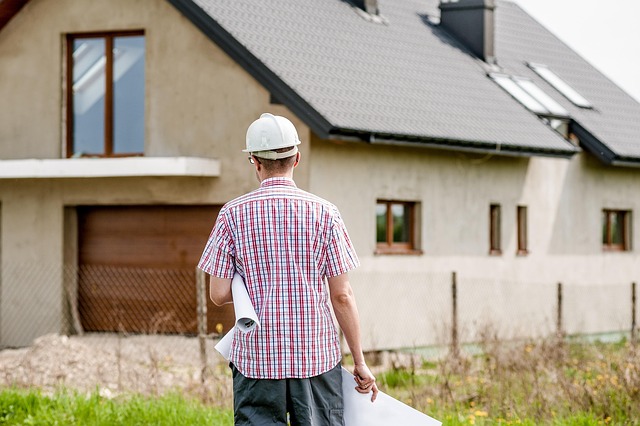Are 2025 Prefabricated Homes the Future of Affordable Housing in Canada?
Canada’s housing affordability gap has pushed interest in factory-built homes to the forefront. In 2025, prefabricated construction promises faster delivery, consistent quality, and better energy performance. This article explains what today’s prefab offers, how to evaluate designs, where to find listings in your area, and what real-world prices look like across several Canadian providers.

Canada’s housing pressures have turned attention to factory-built housing that can be delivered quickly, efficiently, and with predictable quality. Prefabricated homes—built as modules or panels in controlled environments and assembled on-site—offer shorter build times, fewer weather delays, and precise quality control. For Canadian buyers facing long timelines and rising site-labour costs, these advantages make prefab a serious option for increasing supply and improving affordability, particularly when land and municipal approvals are aligned.
Prefabricated Houses in 2025
In 2025, prefabricated houses are benefitting from more advanced design tools, better airtightness, and cold-climate features. Many manufacturers optimize wall assemblies for Canadian winters, with high R-values, triple-pane windows, and heat pumps. Off-site manufacturing reduces waste and increases consistency, supporting energy targets and greenhouse-gas goals. Just as important, predictable factory schedules can compress timelines from months to weeks once permits and foundations are ready. In rural or northern areas, modular delivery can reduce repeat travel for trades and shorten exposure to severe weather, while still meeting local codes through CSA certification and municipal inspections.
Pictures of Prefabricated Houses
When you review pictures of prefabricated houses, look beyond staging and focus on build details. Examine roof design and overhangs for snow load and drainage, window placement for passive solar gains, and mechanical closets for maintenance access. Compare model photos to floor plans and spec sheets so you know what is factory-finished versus what requires local trades, such as foundations, decks, or garages. Seek image galleries that show transport, craning, and finished exteriors in Canadian settings; these reveal real tolerances, siding transitions, and how modules integrate on-site. Ask for photographs of recently completed homes in climates similar to yours to gauge durability and finishes.
Prefabricated Houses for Sale
Finding prefabricated houses for sale in your area usually involves regional dealers or builders. Availability varies by province, local services, road access, and crane logistics. Before placing a deposit, confirm zoning, setbacks, height limits, and whether modular construction is permitted on a permanent foundation in your municipality. Clarify what the “base price” covers, including cabinetry, appliances, HVAC, and whether site work—earthworks, foundation, utility connections, and permits—is included. Delivery windows, winter installation policies, and service coverage define how quickly a home can be made move-in ready once land and approvals are secured.
Regulatory compliance and financing are key early steps. Most lenders treat modular homes installed on permanent foundations as conventional mortgages. Verify CSA A277 (factory-built) or applicable standards on the nameplate, and ask how inspections are handled at the plant and on-site. Warranty programs, service routes, and after-sales support matter in remote locations; align delivery timing with seasonal road and crane access to avoid delays or extra costs.
In Canada, total cost depends on size, specification, region, transport, and site conditions. The ranges below are broad estimates to help you benchmark conversations with real manufacturers and dealers.
| Product/Service | Provider | Cost Estimation |
|---|---|---|
| Modular single-family model (2–3 bed) | Les Maisons Bonneville | Typically CAD 300k–600k+ turnkey depending size, finishes, and site work |
| Modular home (Ontario) | Guildcrest Homes | Often CAD 275k–550k+ turnkey; home-only modules may start lower, site costs extra |
| Contemporary steel-framed prefab | Honomobo | Commonly CAD 350k–700k+ for home; foundation, transport, and hookups additional |
| Panelized home package (~1,500 sq ft) | Pacific Homes | Materials package about CAD 150–250 per sq ft; total build varies by local labour |
| Modular home (Atlantic Canada) | Kent Homes | Frequently CAD 250k–500k+ turnkey depending model, region, and site conditions |
Prices, rates, or cost estimates mentioned in this article are based on the latest available information but may change over time. Independent research is advised before making financial decisions.
Beyond headline prices, factor in land, permits, engineering, foundation type (e.g., frost-protected shallow foundation vs. full basement), utility connections, decks, landscaping, and contingencies for rock excavation or long driveways. In cold regions, budget for higher insulation levels, heat pumps or hybrid systems, and air-sealing tests. Transport distance, oversized-load escorts, and craning can materially affect the final number, particularly for remote or island sites.
Prefab’s value proposition is strongest when you need predictable timelines, consistent quality, and energy performance. For suburbs and small towns with available lots and supportive zoning, modular homes can add supply quickly without overburdening local trades. In dense urban cores, land constraints and approvals remain the rate-limiting steps, but prefab can still reduce on-site disruption and shorten schedules once permits are in place. For many Canadian households, this makes prefabricated construction a practical component of a broader affordability strategy rather than a single silver bullet.
In summary, 2025 prefab homes align well with Canada’s climate, labour realities, and the need for more housing choice. Review detailed photos and specifications to understand what is factory-complete, verify compliance and financing early, and benchmark quotes against realistic turnkey budgets. With the right site and planning, factory-built housing can reduce build risk and time, contributing meaningfully to housing affordability across regions.




